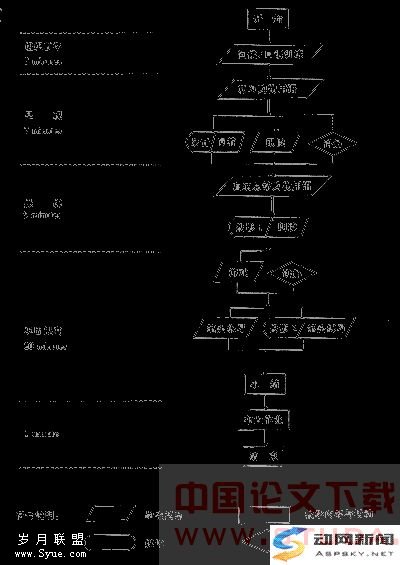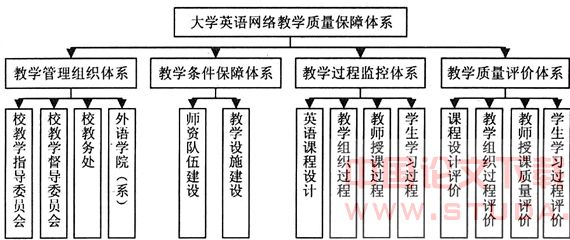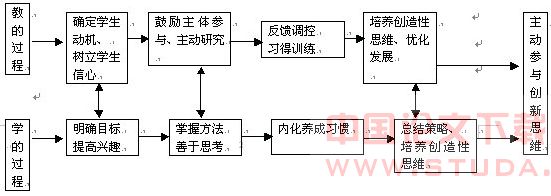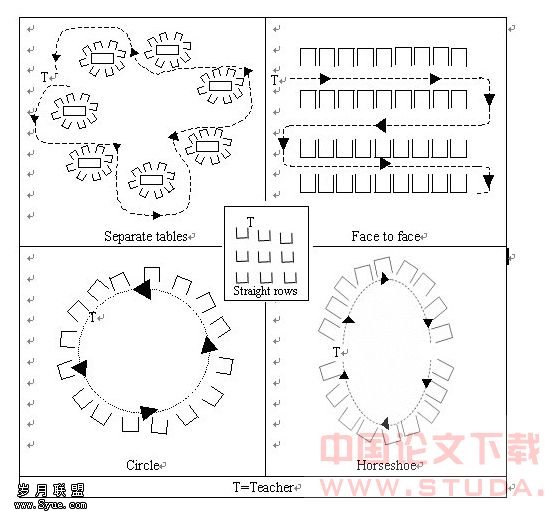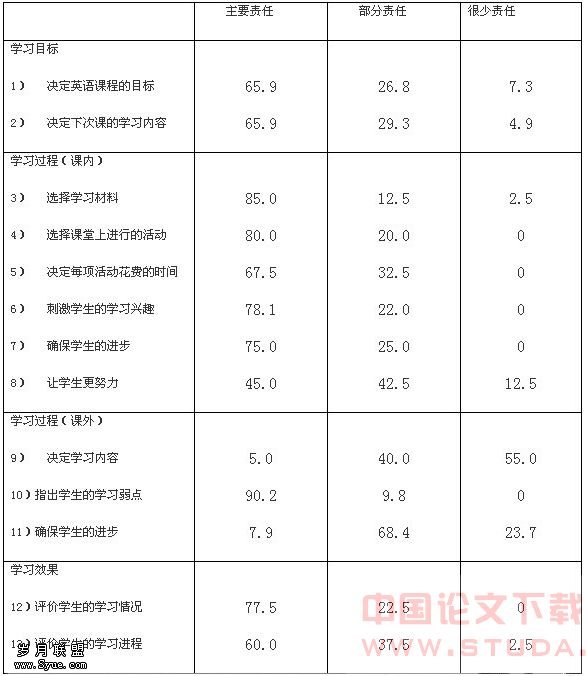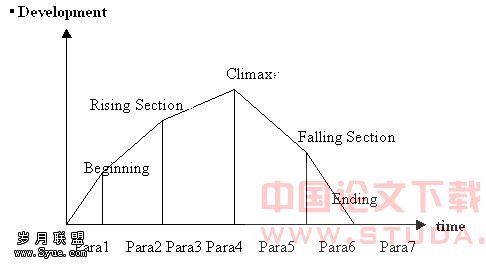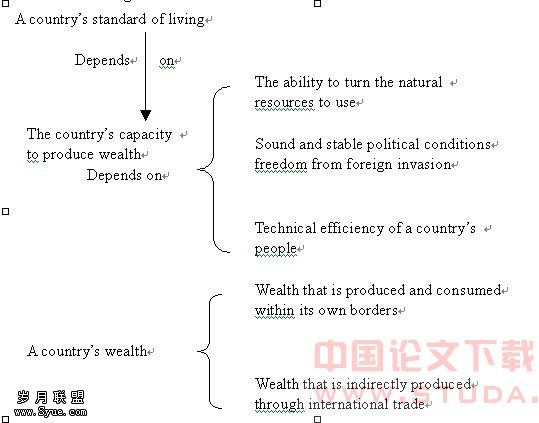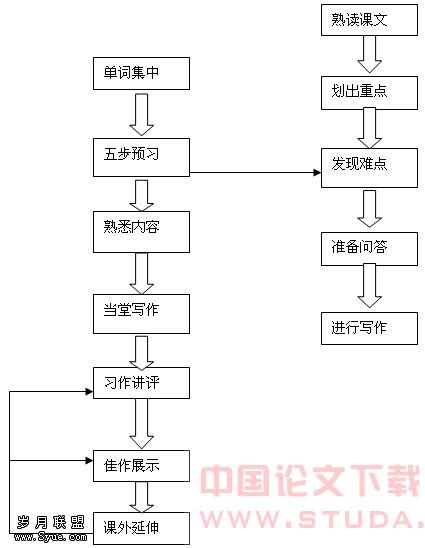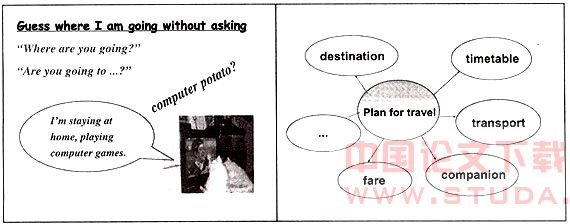浅谈初中英语中的文化教学
[Abstract] Along with development of the cooperation between nations, the international communication becomes more and more important. But, the culture difference brings about lots of misunderstanding and obstacles in communication. Therefore, the knowledge of culture background is essential to the effective communication. Nowadays, English has become a very significant tool in the international communication. It is a must to pay enough attention to the culture education in the process of English learning. The paper intends to make an analysis of our traditional junior English teaching, which indicates that the culture education of this stage is not so satisfying and exists lots of problems. It also focuses on the strengths and the weaknesses of the current culture teaching approaches, showing an opinion that only to develop the strong points and improve the weak, can our culture education of junior English become successful. The present paper also lays emphasis on what a teacher should and what a teacher can do in the process of culture education, discussing the practicable teaching approaches and extracurricular activities.
[Key Words] intercultural communication; culture education; junior English; communicative ability; cultural awareness
【摘要】 随着国际合作的不断,国际交流日益加强。文化差异引起的交际误解及障碍在一定程度上影响阻碍了其有效进行,因而,对文化背景的了解有助于有效交际的顺利进行。当今社会,已成为了至关重要的国际交流语言之一。在学习英语的 过程中,必须把文化教学当作不可或缺的内容。本文通过对我国初中英语传统教学法的分析,发现这个阶段的文化教学现状令人不甚满意,存在着诸如师生的文化意识薄弱等问题,分析了现行的一些文化教学法的优缺点,指出只有认清优缺点,发扬长处改正缺点才能够使文化教学得以有效开展,取得成功。文章侧重探讨分析了在初中英语文化教学过程中,老师必须注意的方方面面及其在课堂、课外必须且能够采取、组织的各种文化教学方法和活动方式。
【关键词】 跨文化交际;文化教学;初中英语;交际能力;文化意识
1. Introduction
Along with the more and more frequent international cooperation, English, as a bridge between China and the world, plays a role of the utmost importance. But, the neglect of the culture background brings about lots of misunderstanding and obstacles in communication. Therefore, it is a must to pay enough attention to the culture education in the process of English learning, considering it as an indispensable part of language learning. In China, most of us begin to learn English from junior. The culture education of this stage is not so satisfying and exists lots of problems, such as the weak culture awareness, the unreasonable design of textbook, the quality of teachers, the ignorance of culture teaching because of pressure of exams and so on. To improve the situation needs the cultivation of culture awareness, the reformation and proper choice of textbook and the adjustment of evaluation systems. Admitting the mistakes and improving them is of great importance, and meanwhile, we should recognize the desirable measures, such as some good current culture teaching approaches and extracurricular activities.
Therefore, the present paper will discuss about the problems and merits of the culture education of junior English in China, probe into how to introduce culture backgrounds in EFL teaching and explore the improvements for it.
2. Culture and language
2.1Definition of Culture and Language
What is culture? Facing this heatedly debated issue, people gives hundreds of answers.
English word “culture” is a loan word from Latin in which it mainly meant, “cultivating or trilling the land”. As time passed, its meaning was extended from physical activities and production of food to include metal, moral, aesthetic, educational and intellectual activities. For example, the National Center for Cultural Competence in U.S.A defines culture as an “integrated pattern of human behavior that includes thoughts, communications, languages, practices, beliefs, values, customs, countries, rituals, manners of interacting and roles, relationships and expected behaviors of a racial, ethnic religious or social group; and the ability to transmit the above to succeeding generations”. (Goode, Sockalingam, Brown, and Jones, 2000) [1]
The following definition advanced by Daniel Bates and Fred Plog (1990) is generally regarded as the most complete one:
Culture is a system of shared beliefs, values, customs, behaviors and artifacts the m embers of a society use to cope with their world and with one another, and that are transmitted from generation to generation through learning.[2]
“Culture” in the contemporary teaching of language may be understood on broad and narrow senses, divided into two kinds: “Culture with big C” which focuses on “the sum total of a people’s achievement and contribution: art, music, literature, technology, scientific discoveries and philosophy” and “Culture with a small C” which includes “ the behavior patterns of the life style of people: when and what they eat, how they make a living, the way they organize their society, the attitudes they express towards friends and members of their families, how they act in different situations, which expressions they use to show approval and disapproval, the traditions they must observe, and so on”.[3]
Language can be defined in many ways depending on the characteristics one wishes to stress. Therefore, it is difficult for us to arrive at a single definition. However, a good example of an all-inclusive descriptive definition is as follows;
A language is a system of arbitrary vocal symbols by means of which the members of speech community communicate, interact, and transmit their culture.
This definition given by Albert B. Cook Ⅲ emphasizes not only the function of language being a tool of communication, but also the one of its being an important vehicle of culture. [4]
As it is known, language has at least two rule systems: one is the structural system, which consists of phonology, morphology and syntax; the other is the use system, which is closely bound up with social behavior and social. Situation and determines whether language is used appropriately or inappropriately.
2.2 The Relationship between Culture and Language
Why is culture so important for foreign language teaching? The answer lies in the close relationship between language and culture.
Firstly, the relationship between language and culture is that between a part and the whole. Culture has several components, one of which is language. The Chinese language is part of Chinese culture and English is also part of English culture. Every culture has its own disparate culture.
Secondly, language is the carrier and container of culture. Human knowledge and experience are described, stored and evaluated in language including customs, habits and behavioral patterns, social institutions, value systems, beliefs, world views even the visual and auditory arts. To be sure, culture can exist in the form of materials. But language as the medium of communication is indispensable in their production and use. For example, during the production, the cooperation between the workers is carried out through language. Even the manuals of the products such as the washing machine are a proof of the fact that language can represent every aspect of culture.
Thirdly, as a mirror of culture, language is strongly influenced and shaped by culture. Words, grammar, language use, idioms and proverbs are all shaped to varying degrees by culture. Take the words for example; “Tai ji” is very familiar to our Chinese whereas there is not a word related to it in English because it is the special culture production in Chinese history.
Fourthly, language also exerts its influence on culture. The nature of this influence is best captured by American structural linguists Charles Hockett when he says that “languages differ not so much as to what can be said in them, but rather as to what it is relatively easy to say in them”.[5] Let’s cite an example to clarify the meaning of this statement. For example, the kinship relations can be expressed more easily in Chinese than in English because Chinese have more kinship terms. “奶奶” and “外婆” are equivalent to only one word “grandmother” in English. This fact helps to reinforce the concept of kinship relations, which is important to the Chinese people.
In a word, language and culture is closely related, each influencing and shaping the other. To learn a foreign language implies to learn the culture in which it is spoken. A language can never be in a cultural vacuum. Culture is learned through language. Without language as the medium for formal or informal instruction, no culture could ever be learned.
3. Culture education of junior English in China
3.1 Importance and necessity of Culture Teaching
3.1.1 Culture Barriers in communication
As Clememt Attlee once claimed, “The people of the world are on islands shouting at each other over seas of misunderstanding.” [6] Owing to different time, space and nations, cultures have their unique contents, which cannot be equalized to others.
Being settled during its own process of development, each culture contains its special belief system, behavior patterns and criteria of normal or abnormal words and deeds. What fits in one culture web may not fit in another. More or less, the differences between cultures constitute Culture Barriers, which will cause communicative problems of people in different cultures. From the aspect of communicative competence especially the inter-culture communicative competence, culture teaching is necessary and important enough to be brought to focus.
3.1.2 Communicative competence
The term communicative competence is used in contrast to Noam Chomsky’s term linguistic competence, which is understood as the tacit knowledge of language structure and the ability to use this knowledge to understand and produce language. For Chomsky, competence simply means knowledge of the language system: grammatical knowledge in other words. However, if we look at how language is used in real communication, we have to accept that real language use involves far more than knowledge and ability for grammaticality. In Hymes’s (1979:15) words, there are “rules of use without which the rules of grammar would be useless”, which simply means, besides grammatical rules, language use is governed by rules of use, which ensure that the desired or intended functions are performed and the language used is appropriate to the context.
According to Hymes (1979), communicative competence includes four aspects:
(i). knowing whether or not something is formally possible (grammatically acceptable), which is roughly equivalent to Chomsky’s linguistic competence;
(ii). knowing whether something is understandable to human beings;
(iii). knowing whether something is in line with social norms;
(v). knowing whether or not something is in fact done: Do people actually use language this way?[7]
In other words, communicative competence entails knowing not only the language code or the form of language, but also what to say to whom and how to say it appropriately in any given situation. Communicative competence includes knowledge of what to say, when, how, where, and to whom.
Along with the rapid development of English-speaking countries, English has become a world language. More and more international affairs and business promote the “intercultural communication”, which calls for the teaching and learning of language and culture.
There are several patterns involved in inter-cultural communication. Since all members of a cultural group do not share cultural patterns in exactly the same way, and any participant in communication only presents partial public and personal, what learners must pay attention to is that what they should know includes the alien culture and the communicative skills.
3.2 Culture education of junior English in China
It is absolutely necessary to stress the culture education in English teaching and learning. Before discussing how to carry out this education well, we should probe into its current situation. Only with the full realization of its merits and shortcomings, can we make full use of the advantage and bypass the disadvantages, and will the culture education go on more effectively.
3.2.1 Problems in Culture Education of China
Obviously, we can see that, in most areas of China, the junior students’ cultural ability of target language is comparatively poor. The failure to provide the students with an introduction of the culture of English-speaking countries in the teaching process, leads to an unsuccessful communication for their incapacity of comprehending or conveying culture-loaded information. That is what we call “communication block”. Then we can see that Chinese learners of English have difficulty in communication with native speakers of English despite a good command of the linguistic knowledge. Some Chinese students, though they got excellent scores in exams, failed in cross-cultural communication. That’s what we are considered as “High Grade, Low Ability”.
What leads to the existence of such a serious situation? It is necessary for us to probe into the causes.
A fact is that the culture awareness is so weak during language learning and teaching that both the students and the teachers consider culture education as a subsidiary part of language study, paying little attention to it. What’s more, even some teachers do not have enough culture information to provide the students, let alone guiding them to complete successful communication.
The old evaluation systems weaken the cultivation of students’ culture ability greatly. It is unfortunate that, although we know it is unwise, facing the pressure of the exams in which there are items testing students’ grammatical knowledge, reading ability and set phrases, to save time, lots of teachers focus on words, linguistic points, idioms and grammatical structure in order to enhance students’ basic linguistic competence.
From 1949 to the beginning of 1980s, the grammar translation method had been playing an important part in foreign language teaching, inclining to overemphasize phonetics, grammar and vocabulary but to ignore the differences of cultures. This kind of teaching method influences the culture education very much. As a result, the relationship of the culture ability and other linguistic skills is not in balance.
Another problem is the textbook. Some out-of-date textbooks, which are responsible for the pattern drills of English seldom used in everyday conversations, are still used.
From the discussion, we can realize that to promote the culture education of junior English demands the solution of those problems above, which will be discussed in Chapter Four.
3.2.2 Requirements of culture education in teaching
The aim of the English Teaching Syllabus currently in effect in China stresses the basic skills of ing, speaking, writing and translating, while the most important goal of English teaching should be to foster the ability of communication. As the total curriculum goals structure shows, along with language skills, language knowledge, language learning tactics and emotional attitude, cultural awareness has become an integrated and basic component of the comprehensive language application ability. The syllabus also adopts the international standards of the different acquirement levels of culture, consisting of Level One to Level Nine.
As the specific aim of the syllabus regulated, culture teaching in junior high school shall accommodate the following contents:
(i). Cultural factors that interfere with verbal communications. It includes the standard functions of hails, greetings, thanks, apologies, farewells, phone calls, requests, and invitations; choice of topics; taboos; euphemisms; social conversations and etiquettes.
(ii). Expressions in nonverbal communications, such as gestures, body motions, costumes, and varying attitudes towards time and space.
(iii). Cultural connotations of words like the demonstrative category, affective meaning and associative meaning of words, and the application of the idioms, proverbs and usages which embody cultural backgrounds.
(iv). Knowledge of politics, economies, history, geography, literature and contemporary social situations of the English—speaking countries.
(v). Understanding of the differences of values and mind-sets between the Chinese and the westerners, which includes outlooks on life and universe, interpersonal relationships, ethics, verbal expressions and so on. [8]
For the development of students’ preliminary culture awareness, teachers in junior or senior high schools needs to follow the principles of “relevance, practicality and gradual improvement”. They should introduce the necessary parts of culture in the English—speaking countries in a selective way.
The principle of relevance demands the content of culture teaching either relate to or broaden the teaching materials. And the materials of language should be also used in culture teaching, that is, it should be combined with language teaching.
Practicality principle requires that culture teaching should reflect the major parts of daily communications. For those cultural factors, which interfere with communications, a full explanation and repeated practice are mostly needed for students’ future communication.
The principle of gradual improvement maintains that culture teaching should be commensurate with the aged and cognitive capacity of the students. Step by step, they will find themselves increasingly at ease with the unfolding western cultures. [9]
On the one hand, as the English Teaching Syllabus states, the culture knowledge is as important as the basic skills, both of which are integrated parts of the teaching goals. On the other hand, learners’ basic skills including listening, peaking, reading, writing and translating are closely related with the culture information.
(1) It is the principle of English teaching that listening and speaking take primacy over reading and writing. And the process of listening and speaking often begins with greeting. Without enough culture knowledge, mistakes may arise. For example, when we go shopping, the shop assistant always offers help by asking customers “What do you want?” But it is strange for the English-speaking people who usually greet as “What can I do for you?” or “Can I help you?”
The purpose of listening is to understand the speaker’s meaning in words and exchange information successfully. Sometimes, they only catch the denotation of the words, but fail to consider the most important part, which is the contextual meaning of words and sentences. For instance, the sentence “I am not sure I’d like to do that” is seemingly like considering a matter, but in fact, it is a polite expression of refusal.
(2). Reading and writing materials often convey western culture, which always demand learners to read between lines. Lack of such knowledge will weaken the comprehensive grasp of the real meaning, especially when they are looking over literature works. For example, in English, the color “purple” is the symbol of noble and wealth. If learners don’t understand this, they may not be able to know that the sentence “He is born to the purple” means “ He is born in a noble or wealthy family”. [10] This illustrates the cultural impact on the words’ connotation. Another example is “dragon” which symbolizes evil, whereas its translation “龙” means power and authority in China Only with such a realization, could the readers understand the meaning of “butcher dragon” in English.
English writer Pennycook describes the thinking methods of Chinese and English in the book Image of the other as following: [11]
↓
English Chinese
As the pictures show, Chinese are accustomed to thinking in a spiral way whereas English in a linear way, which influence their writing very much. English—speaking people may not be able to catch the meaning of our Chinese composition that is good at grammar and logic, because their writing always comes straight to the point.
(3) Every culture has its own unique characteristics basing on its historical and geographical environment. Clear and proper translation needs accurate understanding of the original work. For example, the idiom “apple of one’s eye” in the sentence “Mary is the apple of her father’s eye” means “a cherished person or objects or something that is extremely precious to a person”. The idiom comes from the Bible, as one of the great Israeli kings, King David says to God, “Guard me as the apple of eye, hide me under the show of wings.”[12] Unless with help of culture knowledge, will the learners give an accurate translation.
Although there are lots of problems in our junior English culture education, some measures of culture teaching are very useful and practicable, such as some current culture teaching approaches and extracurricular activities.
(i) Culture teaching approaches
The culture teaching method is various. One of teacher’s primary tasks is to use various kinds of methods to carry on culture teaching. Here are some basic and desirable approaches used at present:
(a) Direct introduction
During English teaching and learning, the more culture information of English-speaking countries the teachers provide, the more clear the students will know about Western culture, and the more accurately and proper they will use the target language. A most popular way to offer the information is the direct introduction, which emphasizes the presentation of teacher in the classroom. The information can be presented by this approach includes: its geography, history, forms of government, literature, religion, education, holidays and so on. While using this approach to show the students culture information, the teacher should try his/her best to carry it out interestingly and vividly making good use of teaching aids.
For example, as the students grasp the meaning of all the “weekdays”, the teacher can directly introduce that in Western countries, it is Sunday not Monday that is considered as the first day of a week. Pointing it out directly will give students a clear impression.
At present, “Christmas” is not a strange word for our Chinese people, some of whom even go to the church to enjoy the day happily. While discussing about such holidays that only appear in Western countries, can teachers show some related pictures such as “Santa Claus” and “Christmas tree”, inform students that the day is the birthday of Jesus Christ, and let them know about how the Western people celebrate it and so on. Direct teaching will give students an overall and general realization of Christmas.
While operating this approach, teachers can take advantage of all kinds of aids, including pictures, cards, and newspapers and so on, to achieve a profound and effective teaching outcome. Collecting materials in daily life does assist teachers themselves in classroom presentation.
However, this approach has its limitations: though students have an overall knowledge of English culture, they are still lack of real and actual communication. Communicative competence, if any, will be very limited with this kind of information provided directly by teachers.
(b) Contrastive analysis
Contrastive analysis is concerned with the comparison of two or more languages or subsystems of languages in order to determine both the differences and similarities between them. (Fisiak, 1981) [13]
As an old method, contrastive analysis consists of four steps: description, selection, comparison and contrast, and prediction.
Take Culture Unit 2 of Go for it (Grade Seven) for example, activities 5a provides a reading material Mind your manners about table manners of different countries. With the detailed description of the table manners, after discussion, as activity 5b designed, students will find out the strange eating habits of different countries. For example, we Chinese prefer the restaurant to be noisy whereas in many Western countries, restaurant should be quiet places. With the comparison and contrast, prediction concerning on what problems may crop up because of these different opinions can be inferred easily. Getting the different views about the restaurant environment between Chinese and Western people, the students will understand that as lots of we Chinese usually do, speaking and laughing loudly in the western--style restaurant is very impolite, and sometime may make the foreigners very offended.
In short, through contrastive analysis, the culture differences can be shown clearly. And as we known, such comparisons and contrasts should base on the underlying description. Only when being offered detailed enough information, will the students be able to carry out satisfied comparisons and contrast which enable them to master English as well as to improve their intercultural competence.
(c) Error analysis
Error analysis refers to the study and analysis of the errors made by second and foreign language learners. (Richards, 1985)[14] Inevitably, in the process of a language and culture learning errors take up a great part of it as every learner will certainly make mistakes. Those errors during learning reflect the difficulties the learners come across. From such errors, it is possible to be aware of the learners’ competence at different stages, thus, the error analysis become a useful method in culture teaching.
For instance, conversation as following is not strange for us:
A: Your handwriting is very good.
B: No, no, my handwriting is very poor.
There is no grammatical mistake in the conversation at all, but it is unsuitable in the English culture to response to the praise as B do. The explanation is that, in Chinese, one likes to show modesty when winning praising, whereas in English and American culture one likes to express appreciation to praise. Such kind of responds that occurs in the communication shows the absence of culture education. So the answer should be “Thank you” or “I’m glad you think so”.
(d) Communicative teaching approach
Learning English dose not only mean acquiring the knowledge including grammatical structures, words, pronunciation and so on. It emphasizes more on the learners’ abilities of using the language for communication. The final goal of acquirement is to interpret and participate in social interactions with English and its cultural knowledge. Communicative teaching approach attaches importance to cultivate the learners’ communicative competence. One of the most characteristic features of communicative language teaching is that it plays systematic attention to functional as well as structural aspects of language. (Liltlewood, 1981) [15]
As the aim of EFL learning and teaching is to achieve the communicative competence, some certain special features of communicative—activities teaching approach call for our attentions. Firstly, this teaching approach stresses that function is as significant as form. Compared with the traditional teaching approached, putting more attentions on the usage of language rather than the usage rules. Secondly, an aspect of communicative competence is using the target language appropriately, which means the usage of a lot of authentic language instead of artificial grading of language. Thirdly, fluency is also a point of communicative competence, which is contained in the goals of EFL teaching. The fluency of communication is just as significant as the accuracy of language usage. Fourthly, the same importance should be attached to the communicative activities themselves as well as the content and result of such activities. While practicing these activities, stressing on achieving a vivid impression is more important than just understanding the related knowledge. Experience of participating in the lifelike social communicative activities can help the learners comprehend the acquirements truly.
The communicative activities of the teaching approach in the classroom refer to those involving learners’ active participation in communication such as role-play, information-gap activities, problem-solving activities, etc. In role-plays, basing on cultural background, the students create some certain mini-society and act out a corresponding miscommunication.
For example, the reading material is “Mind your manners”, [16] , as we mentioned above, shows the readers the different ideas of table manners in different countries. After reading, the teacher can create some certain situations and invite students to act them out, such as student A acts as an American customer in a restaurant and student B as a waiter. While the role-play is going on, other students will observe carefully, and of course will identify the culturally appropriate and the inappropriate actions which can keep the real and meaningful usage of the culture and language knowledge in their mind deeply.
Communicative teaching approach is really a good way to grasp English including using the language cultural acceptably, combining the cultural context and communicative social activities.
Besides four teaching approaches above, there are various kinds of methods that can be used in culture teaching. During practicing, teachers can choose suitable approaches according to the lessons flexibly.
(ii) Extracurricular activities of culture education
Time in class is so limited that it is a must to take good advantage of the time outside classes, organizing various extracurricular activities to enrich the students’ culture knowledge. Here are some suggestions:
(a) Reading activities
Those reading materials contain literature works, newspapers, magazines and any other books that involve the culture background of other countries, especial the English-speaking ones. Each of the above can cover a vast number of culture information. Take magazines for example, as more and more English magazines emerge, the messages of the western culture we can get are growing under the situation that all of them contain culture content, such as the worldview of Crazy English, the travel of Happy English,the east-west corridor of English Study and so on. Another example is newspaper. Many aspects of culture that are not usually found in a textbook are also present in newspapers. Good cultural insights can readily be found in headlines, advertisements, editorials, reports pages, comics, and even the weather report.
In short, reading opens a door to the colorful world and enriches our knowledge with its imperceptible influence.
(b) Holding lectures
To have culture subject is impossible for the junior students. But to hold lectures is completely practicable. The speakers of the lectures can be the teachers as well as the students. Along with the plentiful information provided in the books and Internet, teachers can collect the information of a certain culture topic easily, conveying them to the students by the way of holding lectures. Fatherly, it is better to assign the job to students in the form of individual work or group work. The process of collecting the related information and then holding lectures by themselves or through cooperation enable them to gain a more impressive memory.
(c) Singing English songs
Being on everybody’s lips, lots of English songs, short as they are, contain a profound inside information which reflects a country’s temper, customs, and psychology and so on. The introduction of its culture background before learning the songs makes students understand the songs better, simultaneously; the exquisite melody and clear rhythm can consolidate their impression in an interesting way. What’s more, sometimes the words of songs display the native speaking directly. For instance, George Strait’s Easy Come, Easy Go shows the farewell expression very well: Goodbye; Farewell; So long; Vaya Cor Dios; Good luck’ Wish you well; Take it slow; Easy come, easy go… [17]
(d) Watching films and television programs
Film and television program offer students an opportunity to witness behaviors that are not obvious in texts. They are often the more current and comprehensive ways to encapsulate the look, feel and rhythm, and they also connect students with language and culture issues simultaneously, such as depicting conversational timing or turn taking in conversation. Students who have watched the film True Lie will all know that “Where is John” is the euphemism of “Where is the toilet”.
As the life occasions provided by films and TV programs are various, the language materials are riches of variation. At the same time, other communication measures, such as gestures, expressions and actions, can be observed directly.
(e) Talking with foreigners
As the final goal of language learning is to communicate in the target language, to come into contact with the native speakers is an important and useful method to gain and drill the real life speech and action styles. To some extend, such a kind of contact cannot be substituted by any other ways, therefore, encouraging students to talk to foreigners is of great sense. Feasible methods include taking part in the English corner, visiting the foreigners, inviting the foreigners to school to pass time with students and so on. The veritable experience will teach them more than what they get in the text in a more true and direct feeling from.
…
All these above are just bits of extracurricular activities for culture education. Accommodating with the actual circumstances, different extracurricular activities can be chosen.
4. Improvements for culture education of junior English
With the discussion of the problems appeared in our junior English culture education, we are going to discuss about the improvements of it.
4.1 Cultivation of culture awareness
With the well-known realization that to be successful in intercultural social communication needs the sufficient cultural information, more and more teachers pay attention to culture teaching during English teaching so as to help students achieve the mastery of English. At the same time, no matter who, the learners or the teachers must not forget that before coming into contact with the culture education, cultivating correct attitudes is something of first importance.
Attitude, like all aspects of the development of cognition and affect in human beings, develop early in childhood and are result of parents’ and peers’ attitudes, contact with people who are “different” in any number of ways, and interacting affective factors in the human experience.
An old Chinese saying says: attitude is everything. We can see that attitude plays a critical role in the process towards success. That is true of English culture learning. If desirable attitudes could be identified, agreed upon by the community and taught as part of educational programs, then communication and interaction among different people and communities would be greatly facilitated.
4.1.1 Students’ culture awareness
During the process of cross-culture education, although culture difference always can arouse students’ interest and curiosity, they also doubt the necessity and importance of culture learning with the consideration that they may never directly engaged in foreign affairs. To solve this kind of doubt, the teacher should play a role as a guider, giving reasonable leading to help students get a correct realization of the reason to learn foreign culture.
To build the culture learning awareness can improve them to become a modern people in the modern world where the opportunity for job is great and potential. What’s more, the global process implied the cooperation with people intercultural, which requires them to prepare for the chance in the future. Realizing the fact will stimulate and remain heir motivation.
Going a step further, the teachers must make the students hold a view that to build cultural awareness is even more beneficial and significant than the culture information only, which means encouraging a study for life. Meanwhile, a point should be brought into focus is that such a study dose not only equal to receiving the information without any consideration, but calls for a doubting attitude towards the information offered by others rather than getting by themselves who are not living in an English—speaking country. An advanced study attitude is to learn with the question “why”.
To some extent, the achievement of the English culture education goal relies on students’ cultural awareness. Therefore, it is of great importance to foster the students to take the culture learning for granted.
4.1.2 Teachers’ culture awareness
While acting as a guider in the culture education, the teachers’ attitude influences this program greatly.
In the past, it was believed that teaching target culture was teaching target language. However, this view and practice will expose students to a hollow language devoid of culture context. (Cem and Magaret Alptekin, 1984) [18] Nowadays, more and more teachers have recognized the necessity of culture teaching and taken more and more notice of stressing it during teaching activities. Only with the view that a satisfied language teaching lays its emphasis both on linguistic skills and communicative competence, the teachers can play an appropriate role in the culture education.
An English teacher should have cultural awareness first. And knowledge of the target culture remains an important part of language learning, especially at higher levels. (Luke Prodormou, 1992) [19] As the classroom time is limited, integrating culture information with classroom activities is an effective way, and should be operated with a learner--centered methodology. What’s more, teachers should train the students to read between lines by inferring the cultural--determined meaning from clues.
While teaching culture, teachers must value all cultures equally, pointing out that there is no good or bad, reasonable or unreasonable, dominant or subordinate culture among them and the aim of culture study is not to argue or evaluate them but to satisfy the demand of communication. The teachers need to master both English culture and Chinese culture so that can build a frame of cultural pluralism in mind.
Since the students had better cultivate a view of lifelong study, it is beyond doubt that teachers of all levels should get continuing education. As living in the information—exploding time, only keeping on learning will enable the teachers themselves to provide students with the newly up-to-date information. For example, nowadays, more and more “DIY” clubs appear, and people may be curious about its meaning. As a newly popular object in China, “DIY” has its own culture origin. In 1960s, a Do-It-Yourself Movement was promoted in England with the aim of creating individual life. Englishmen like to decorate their house to their own taste very much, thus such kind of “DIY” trend appeared in the field of indoor decoration and then expanded to other fields. Generally, this do-it-yourself is accepted and welcomed by Americans and now even becomes popular in China. Then many new words are extended from it, such as “a do-it-yourself job”, “a do-it-yourself bookcase”, “do-it-yourselfer” and so on. Obviously, only when teachers continue learning and receiving new things, can they have current knowledge to teach. What’ more, a great quantity of such kind of acquirements do not only rely on the training programs encouraged by the State Education Ministry but also on lifelong education on the part of teachers themselves in every possible way.
Another aspect is that teachers should pay attention to is “stereotype”. A stereotype is a “standardized mental picture that is held in common by members of a group and that represents an oversimplified opinion, prejudiced attitude or uncritical judgment.” (Kebecca Keogh, 2001) [20] Usually, our cultural patterns shape our perception of other cultures objectively, and limit our flexible usage of knowledge of cultural differences, therefore, what the teachers have to do include making students be aware of the stereotype during learning.
In short, the teachers’ attitude has a great impact on the education outcome, which reflects their qualities and indicated whether they are up-to-standard or not.
4.2 Adjustment of evaluation systems and selection of textbook
Over a long time, with the pressure of exams, all the teachers associate “evaluation” with “exams” simply. Such a view influences the teaching process so much that teachers and students become the “slaves” of exams, just focusing attention on what will appear on the test papers.
Under such a situation, the reformation of the design of test paper such as adding some items on culture information, more or less, can attract their attention of culture teaching.
In addition, the adjustment of the evaluation systems seems to be more important and necessary. To build up evaluation systems being consistent with the language learning goals, without any doubt, will push the culture education ahead. For instance, the education departments can add the oral and ing tests, organize various kinds of competitions such as speech contest between schools, and so on, to encourage the culture education properly.
Textbook is the most important material for language study. We believe that good textbooks should bring the culture information as much as possible and provide the students with opportunity to use target language to achieve communicative purposes. Thus, the education institutions including the National Education Department, the region education departments and even the schools must be responsible for the selecting of the textbook, making sure that students will have a suitable culture study medium.
5. Conclusion
From the analysis above, we can see that the teaching of culture should become an integral part of junior school English instruction. The English teaching in junior high school is not just to give a homily on syntactic structures or learning new vocabulary and expressions, but mainly incorporates, or should incorporate, some cultural elements, which are intertwined with language itself.
At any rate, language learning should aim at communicating without culture barriers. Moreover, junior English teaching should make learners aware of culture as well as provide them with the opportunity to act out being a member of the target culture.
Bibliography
[1] Wu Qingyu. Culture in Second Language Teaching. [J] 泰山学报,2004,Vol.25, P543
[2] Chen Liqqua. Culture Transmission in Language Teaching. [J] Journal of Guangxi Traditional Chinese Medical University.2003, 第6卷,第3期, P130
[3] 王振亚主编. 语言与文化.[C] 第2版,高等出版社,2000年11月,P20
[4] 同[2],P129
[5] 同[3],P20
[6] 陈彬. On Culture Teaching in High School. 硕士学位. 福师大,2002,P11
[7] 王蔷主编. A Course in English Language Teaching. [C] 高等教育出版社,2000年7月,P15-16
[8] 同[6] P36
[9] 同[6] P35
[10] 张勇先主编. English Idioms for Chinese Student. [C] 人民大学出版社,1998年7月,P61
[11] Pennycook. Image of the Other [M]
[12] 任笑川.《圣经习语典故》. [J] 海外,2003年1月,总第28期,P36
[13] 同[6], P29
[14] 同[6], P30
[15] 同[6], P32
[16] 课程教材研究所,英语课程教材研究开发中心,汤姆森学习出版集团,Go for it.七年级上,[C] 第3版,人民教育出版社,2005年6月,P92
[17]George Strait. Easy Come, Easy Go
[18] 同[6],P36
[19] 同[6],P36
[20] 同[6],P35
